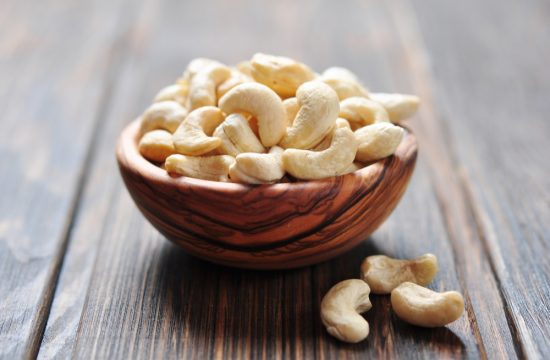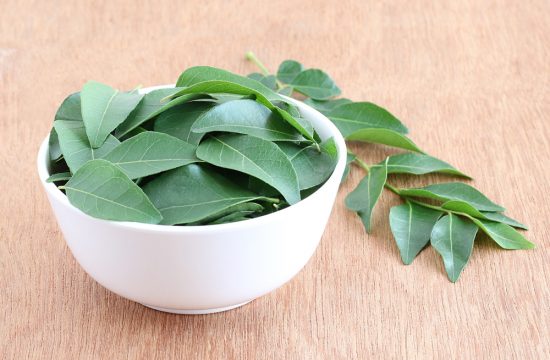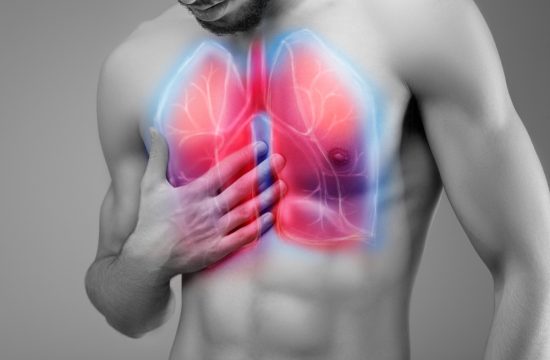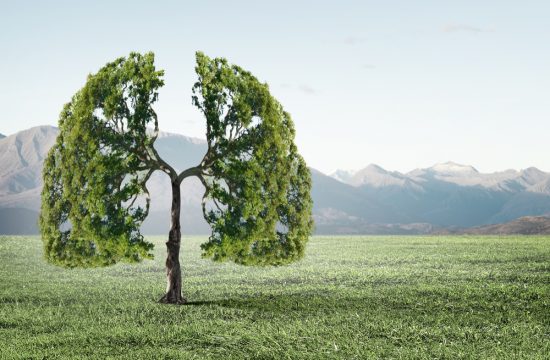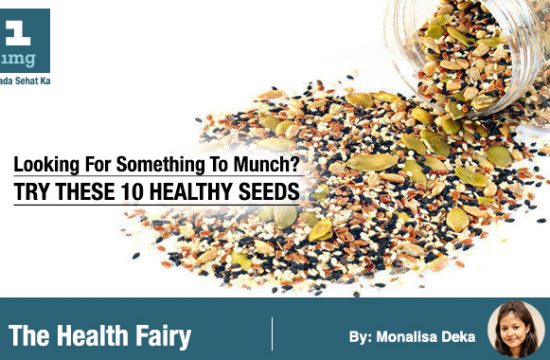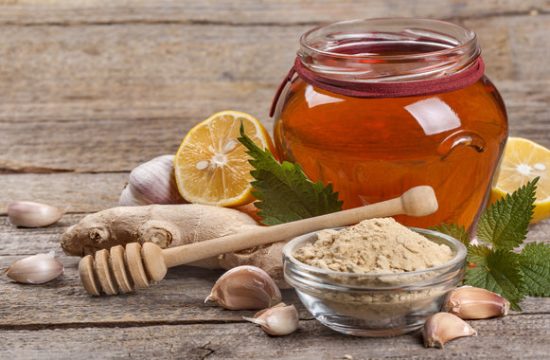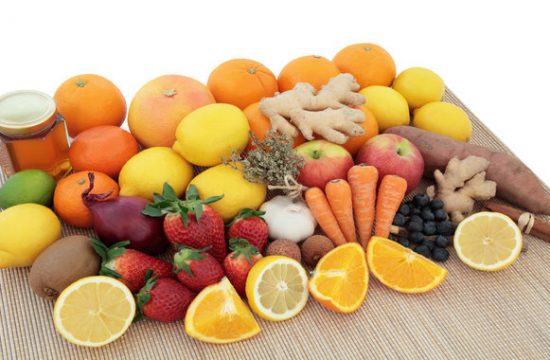Sanjay and his wife were happily celebrating their fifth anniversary and had planned a dinner date. They went to a restaurant, ordered food and had just started eating it, and within few seconds Sanjay felt some itching sensation inside his mouth. He tried to scratch his itch and then he vomited and began wheezing. His wife Shreya panicked and took him to the doctor immediately. Sanjay was diagnosed with a food allergy – in this case to seafood.
What exactly food allergy is?
Food allergies happen when body’s immune system reacts after a certain food is eaten, triggering an allergic reaction. It is usually experienced during childhood than in adulthood. The food allergy reactions can vary from person to person, it can vary from mild to severe. There is no exact time frame for the reaction to happen, it might happen within few minutes or can even take hours or a week’s’ time to happen.
Common Symptoms Of Food Allergies:
Usually, the symptoms of food allergy reactions can affect any of the four following areas of the body:
Skin: Redness or swelling of the face; itching and swelling of the lips, tongue, or mouth; itchy red bumps called hives; eczema
Gastrointestinal tract: abdominal pain; nausea; diarrhea; vomiting
Respiratory tract: Runny or stuffy nose; coughing; sneezing; wheezing; shortness of breath
Cardiovascular system: lightheadedness or fainting.
What to do if the symptoms occur?
*The appearance of symptoms after eating food may be a sign of food allergy.
*One needs to identify the food and foods that cause the symptoms and avoid eating them.
*The affected person should be immediately taken to the doctor for appropriate testing and evaluation.
*If the person has a food allergy, they should make a habit to check the ingredients of the food he/she is taking.
*The person should also be taught, in case of accidental ingestion, to recognize the early symptoms of food allergy and should be armed with appropriate treatment measures.
Possible risk factors include:
Age: Food allergies are most common in children, usually they outgrow it with age, but there are few food allergies that are more likely to stay long.
Asthma: Asthma and allergies go hand in hand.
Family history: If asthma, eczema, hives or allergies such as hay fever are common in your family then you are more prone to food allergies.
Other allergies: if you are already allergic to one food, then the possibilities of being allergic to other foods increases.
Food allergy in India:
Food allergy is a growing public health concern all over the world. India, with a diverse and unique food culture, has acquired its own portfolio of allergens too. Roughly 30,000 emergency room visits and 100 to 200 deaths every year are due to allergic reactions to food in the nation. According to the World Allergy Organisation (WAO), an estimate of allergy prevalence of the whole population by country ranges between 10-40%
Most allergic reactions to food are caused by just a handful of products. Here we have listed the ten most common foods that cause food allergies:
Cow’s milk:

Cow’s milk allergy is the most common kind of food allergy among children under the age of three years. Almost 90 percent of the kids outgrow this food allergy as they get older, and this is what makes it much less common in adults.
To prevent the allergy, it is very important to avoid cow milk and cow’s milk products from baby’s diet. Breastfeeding mothers of babies with an allergy also have to avoid cow’s milk and foods that contain it from their own diets.
Symptoms of cow’s milk allergy include:
*Diarrhoea
*Bloated tummy
*Stomach ache and cramps
*Feeling sick
*Itchy Rashes
*Wheezing
*Runny noses
*Coughs.
Possible alternatives to cow’s milk:
Soy milk, almond milk, cashew milk, coconut milk, Oat milk, hemp milk etc.
Egg White Allergy:

Eggs are everywhere, not only they are served as breakfast but they are also present in all sorts of foods like cakes and muffins. But, the sad part is that children are sometimes allergic to eggs.
An egg is said to be the second most common food allergy in children. However, most of them outgrow their allergy by the time they grow up. People with this allergy are mostly allergic to the egg white rather than the yolk because that’s where the protein is and usually allergies are triggered by proteins.
Symptoms of egg white allergy include:
*Stomach ache or digestive distress
*Skin reactions
*Respiratory problems
*Anaphylaxis
Like many other allergies, the treatment for an egg allergy is an egg-free diet. But unlike cow’s milk allergy, you may not have to avoid all the foods that contain egg, as heating the egg can change the shape of the allergy-causing proteins, which are not more harmful to the body, meaning they are less likely to cause an allergy. Around 70 percent children with egg allergy are tolerant to eating biscuits or cakes made with egg.
Peanuts Allergy:
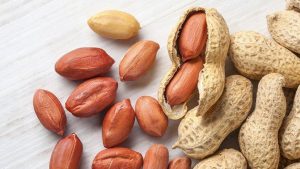
Unlike the above two food allergies, peanut allergy is one of the most common food allergies in both children and adults.
Symptoms of peanut allergy include:
*Itchy skin or hives
*An itching or tingling sensation in or around the mouth or throat
*A runny or congested nose
*Nausea
*Anaphylaxis (least common)
There is no special medicine for peanut allergy and many people don’t even outgrow them. The best option to avoid this allergy is to stop eating peanuts and peanut-containing foods.
Peanut substitution in recipes:
It is very easy to replace peanuts in recipes. There are many substitutes available in the market like:
*Roasted pumpkin seeds
*Sunflower seeds
*Flaxseed
*Soybeans
*Peas
*Chickpeas
Wheat Allergy:
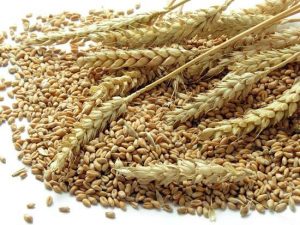
You might be surprised, knowing that wheat which is the staple diet of North India is also one of the foods that cause allergy. Wheat allergies are extremely common and are often confused with celiac disease, but the two are entirely different conditions that are diagnosed differently and have different symptoms.
Symptoms of the wheat allergy include:
*Skin Rashes
*Irritation of the mouth and throat
*Diarrhoea
*Eye irritation
*Trouble breathing
*Nasal congestion
*Nausea and vomiting
As the only way to prevent this allergy is to have a wheat-free lifestyle. So, the person suffering from this allergy should not be given foods made with corn-starch, semolina or suji, all-purpose or white flour. So the person has to avoid upma, suji lapsi, suji kheer or toast, cakes, cookies, biscuits and white sauce.
Fortunately, there are many food options available in the market and restaurants for the people who have an allergy to wheat. So the alternate for wheat can be:
*Corn
*Rice
*Barley
*Rey
*Oats
*Quinoa
Tree nuts:

From the popular cashew, almond, hazelnuts, pistachio nuts and walnut to the lesser known pine nut, lychee nut, all of these nuts come under tree nuts. Along with peanuts, tree nuts also comes into the list of foods that cause allergy. A tree nut allergy usually lasts a lifetime; very few people outgrow this allergy.
There is a very common doubt associated with tree nut allergy, that if a person is allergic to one type of tree nut, must they avoid all tree nuts? And the answer is ‘yes’, as there is a risk of cross-contamination. So, it is always better to avoid all tree nuts if you are allergic to one.
How can a person get a right mix of nutrients if they are allergic to tree nuts?
As tree nuts are a major source of protein, omega-3 fats, dietary fibre, magnesium, phosphorus, potassium, folate and vitamin E. So, the substitutes of tree nuts are:
*Protein: Meat, fish, poultry, eggs, cheese, milk, beans, soy
*Fibre: Vegetables, fruit, whole grains
*Omega-3: Flaxseed oil, edamame (soybeans), radish seeds, omega-3 eggs fortified with DHA
*Magnesium: Wheat germ, peas, pumpkin, squash or sesame seeds
*Phosphorus: Wheat germ, rice bran, wheat bran, cheese, beans
*Potassium: Leafy green vegetables, beans, lentils
*Vitamin E: Spinach, red pepper, egg, sunflower seeds
Soybean:

Soy is a very common ingredient in foods, which makes it even more common cause of food allergy. It is more common for children than teens and adults but can develop at any age. Soy allergy is a kind of allergy in which the reaction starts 1-2 weeks after the consumption of soy.
Soy allergy symptoms include:
*Red spots on the body
*Swelling
*A sudden drop in blood pressure
*Unconsciousness
*Trouble in breathing
*Wheezing
*Hoarseness
*Stomachache
*Itchy, watery or, swollen eyes
Allergic reactions to soy differ from person to person and sometimes can react differently at different times.
Other names of Soy:
The only way to prevent Soy allergy is to lead a soy-free life. So, to do this you need to know the other names of soy like tempeh, tofu, textured vegetable protein, and miso. Learning these names will help in checking the name in ingredient list while buying packaged foods.
Nutrition check:
The main nutrients in soy are omega-3 fatty acids, proteins, folate, iron, calcium, zinc, vitamin D, vitamins B and folate. The food items which can compensate the loss are dairy products, meat, fish, poultry, whole grains, eggs, cereal etc.
Fish:

A fish allergy is different from seafood allergy. A person with the fish allergy might be allergic to some types of fish but not other sea creatures like shrimps, crabs, lobsters etc. Fish allergy can develop at any age, and one can be allergic even to the touch of fish or breathing in vapors from cooking fish.
A fish allergy can cause very serious reactions like wheezing, trouble breathing, stomach-ache, vomiting, diarrhea, red spots, swelling etc. One can have different reactions to the different type of fishes or react differently at different times. If a person is diagnosed with a fish allergy, medications and injectable should always be handy.
Fish allergy management can only be done by avoiding fish and fish products. Due to high risk of cross-contact during food preparation, it is best to avoid seafood restaurants in general.
Shellfish:

As discussed above a shellfish allergy is different from a fish allergy. Shellfish fall into two different groups:
Crustaceans: shrimp, crab, or lobster
Mollusks: clams, mussels, oysters, scallops, octopus, or squid
People with shellfish allergy can be allergic to both groups and some might be allergic to only one. Usually, in other kinds of allergies a person reacts to the allergy if he eats the food, but in case of shellfish, the person can even react to touching shellfish or by inhaling in the vapors from cooking shellfish.
Shellfish allergy can vary from mild to severe. So anyone with a shellfish allergy should completely avoid shellfish.
If a person starts developing serious allergic symptoms, like swelling of the mouth or throat or difficulty breathing then immediate medical care is needed, as every second count in an allergic reaction. The person should be kept under medical supervision because even if the situation is under control, there are chances that the second wave of serious symptoms might occur.
Raw fruits and vegetables:
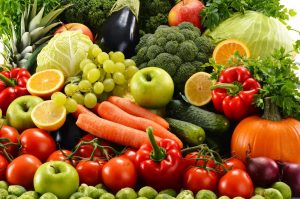
The allergy to raw fruits and vegetables is also known as Oral Allergy Syndrome (OAS), this usually happens only in the mouth and throat. A person with this kind of allergy notice itching, tingling, swelling and redness of the mouth, lips or throat when they eat the fruit or vegetable they are allergic to.
People who are allergic to pollen are usually prone to OAS. Many people with this allergy can eat the same food without any problem if they are cooked.
The symptoms associated with OAS are usually mild, but rarely the allergy can affect other parts of the body and can cause serious symptoms.
Sesame seeds:
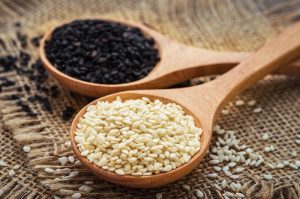
Sesame seeds are considered to be one of the most common causes of food allergies. This is a kind of allergy which usually stays for life-long. If a person is allergic to sesame seeds then he might be allergic to another type of seed like sunflower, flax, caraway, poppy etc.
Sesame seeds are a rich source of calcium, magnesium, iron, phosphorus, vitamin B1, zinc and dietary fibre. Nutrients in sesame can be found in dairy products, green leafy vegetables, beans, fish and whole grains.
The bottom line:
Usually, food intolerances are often confused with food allergies. But both of them are entirely different. Food allergy is caused by your immune system incorrectly identifying some of the proteins in food as harmful.
Most food allergies are caused by the above discussed ten foods. These allergies can cause potentially life-threatening reactions, and the only treatment is the removal of the food from the diet.
If you suspect you have any kind of symptoms while eating food, then immediately consult your doctor about it. It is important to know which foods are at blame so that you can immediately avoid them.
Recommended Reads:
5 Herbs That Help To Fight Respiratory Allergies
Food Allergies May Be Linked To Anxiety In Children
1,068 total views, 2 views today

